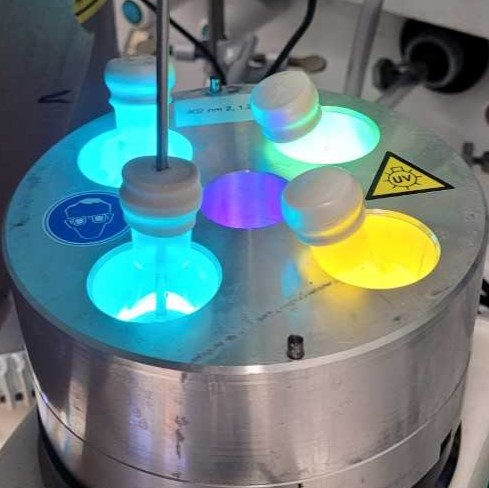Illuminating a New Frontier in Catalysis: Making Single Handed Molecules Sustainably using Light

Chemists from the University of Münster´s Institute for Organic Chemistry report a new strategy to unlock unprecedented reactivity in earth-abundant aluminium catalysts using light. The work has just been published in the leading journal Nature Chemistry and features a method developed by the group of Prof. Ryan Gilmour, and a theoretical investigation by led by Prof. Johannes Neugebauer.
Organic chemistry is vital for our society, enabling the development of essential medicines and agrochemicals, and providing methods to expedite their production. Driven by factors such as changes in population density, or the emergence of new health challenges, chemists are constantly being challenged to develop sustainable and cost-effective methods for molecular construction, and to search for more effective functional molecules. Consequently, synthetic organic chemistry is constantly evolving to socio-economic changes.
Catalysis has emerged as a key technology that enables many of these socially important molecules to be generated efficiently. Since catalysts are not consumed in the process that they mediate, they can be used over and over thereby making the process more sustainable and selective.
Many societally important pharmaceuticals and agrochemicals exist in one of two mirror image forms, known as enantiomers. Using so called “chiral” catalysts, it is possible to generate a single-handed form of a molecule selectively. This is called “enantioselectivity” and it is essential to ensure that the product has the right biological effect. Within the current collection of chiral catalysts, there is a very exclusive sub-set that are considered to be “privileged” on account of their ability to catalyse many different types of reactions with high levels of efficiency and enantioselectivity. The importance of some of these catalysts is reflected in the 2001 and 2021 Nobel Prizes in Chemistry. Importantly, these catalysts operate by thermal activation (heat) to confer enantioselectivity. Another way to activate catalysts is to provide the necessary energy with light, which is called photocatalysis. However there are only few examples of photocatalysts able to perform a wide range of different reactions with high enantioselectivity (photochemical selectivity - generality paradox).
In this new study, the authors demonstrate that light can be used as an alternative activation strategy to enable one representative privileged aluminium catalyst to catalyse a new reaction. This form of “enantioselective energy transfer (EnT)” allows key motifs that are pharmaceutically relevant to be generated with high levels of selectivity. “Importantly, it demonstrates that this chiral aluminium catalyst shows very different reactivity in thermal and light-triggered reactions, and this example of energy transfer compliments earler work from the group”, say Ryan Gilmour. In an earlier study in 2023, the groups reported that so-called “single electron transfer”, a different type of photocatalysed reaction was possible using the same aluminium salen catalyst. Collectively, these studies show that two new activation modes enable enantioselective reactions to be switched on using light as a cheap and abundant stimulus.
Given the transformative impact that photocatalysis is having on the way we build molecules, identifying privileged chiral catalysts that orchestrate reactivity and enantioselectivity in higher energy scenarios (excited state) processes remains a frontier in asymmetric catalysis. This work represents an important step in reconciling the photochemical selectivity - generality paradox.
